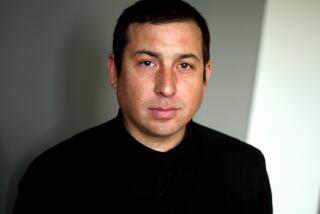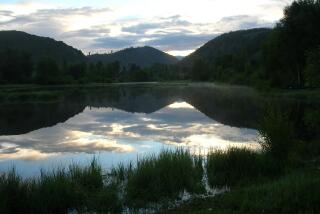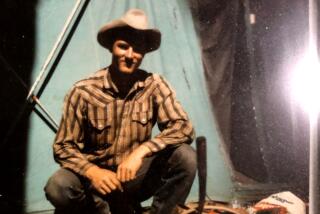Scouting’s Heroes Change but Goals Stay Same
- Share via
The Boy Scouts of America organization was 23 years old when, as a chubby, lazy, fun-loving youth of a dozen years, I joined good old Troop 48 in Long Beach.
The formative leaders of scouting were all living in those halcyon days--Lt. Gen. Sir Robert Stephenson Smyth Baden-Powell, Ernest Thomas Seton, Daniel Carter Beard and James West.
I knew of them, with the exception of West, a name only vaguely remembered. West was the national chief Scout executive, an adroit organizer, while Seton and Beard provided inspirational role models to the movement. Baden-Powell, who kept Labrador retrievers at his English country home and always slept outdoors, founded scouting, and the program crossed the Atlantic in 1910, arriving in Los Angeles and Orange Counties that year as well.
Seton was a naturalist and author who shamelessly anthropomorphized wild animals in his stories. One of his most popular books, “Wild Animals I Have Known,” published in 1898, prompted John Burroughs to suggest that the book should have been called “Wild Animals I Alone Have Known.”
At any rate, I adored Seton’s stories. Wild animals with human characteristics seemed just right to me then. Seton’s animals muddled up in my head with Dr. Doolittle’s talking animals--they were the kinds of animals I always dreamed of meeting.
To meet such animals while dressed in buckskins and a coonskin cap just like “Uncle” Dan Beard was to me the pinnacle of romance. Beard and Seton were authentic outdoorsmen and pioneer conservationists.
Their love for nature suffuses scouting to this year, when the movement is celebrating its 75th anniversary with a huge national diamond jamboree at Fort A. P. Hill, Va., next week.
Seton, who signed his drawings with the print of a wolf’s paw, spread to the nation’s youths the romance of the American Indian. And the Long Beach Boy Scout Council’s summer camp at Idyllwild, named Camp Tahquitz, reflected Seton’s and Beard’s notions of how outdoor life should be conducted.
Troop 48’s sojourns at Camp Tahquitz were golden days when I was 12, and for several summers afterward. We brought our own food and cooked it ourselves over campfires, slept outdoors under the conifers on straw, sang and entertained around a central campfire, went on tough (particularly for this chubby one) backpacks into the San Jacinto backcountry and passed little woodcraft tests. For identifying the various conifers, say, we were rewarded with the symbol of a pine tree stamped on a leather belt. The ideal was to fill the belt with different symbols of our learning.
I think that after three summers at Tahquitz I earned no more than six symbols. I was much too busy horsing around with other kids, trading earthy jokes and going into fits of uproarious laughter over the results of the canned beans we’d cooked and eaten. Looking back from half a century later, I cannot remember any other camp menu but beans.
Chatting the other day with George Trosko, program director of the Boy Scouts’ Orange County Council, we compared notes on the changes in scouting and summer camping in 50 years. The approximately 450 Scout troops in Orange County do their summer camping at Lost Valley Scout Reservation near Warner Hot Springs. This is a full-service camp with a cafeteria, balanced meals and all the comforts of home.
Trosko explained that the objective was to provide a camp environment that would not interfere with the educational process of earning badges. What’s more, scouting has widened its scope from strictly woodcraft and Indians. The most notable expansion has taken place in the Explorer Scout Program, which has more than 300 troops in the county. Explorers go to sea, learn law enforcement, ski, ride in hot-air balloons and run computers.
I liked Trosko’s assessment of the changes from my scouting years to today’s. In my time, he said, we had to know what to do about an overheated pack mule. Today’s scouts want to know how to program a home computer. (And possibly talk to animals that way!)
Seton and Beard have been replaced by the romance of the microchip and space travel.
I’m assured, however, that scouting’s basic ethical values haven’t changed. A Scout is still “trustworthy, loyal, helpful, friendly, courteous, kind, obedient, cheerful, thrifty, brave, clean and reverent.”
I’m afraid I fell pretty short of the mark of the Scout oath in my old Troop 48 days. (I still do today.) But I cherish those scouting years. If nothing else, they nurtured a lasting love in me for the natural world, along with the questionable humor in a can of beans.


